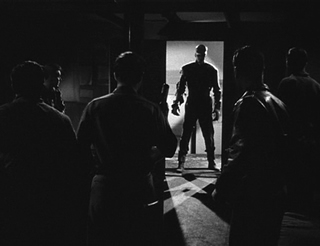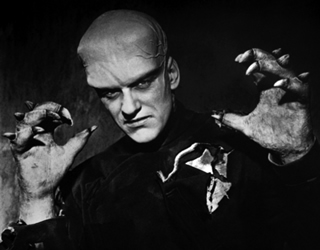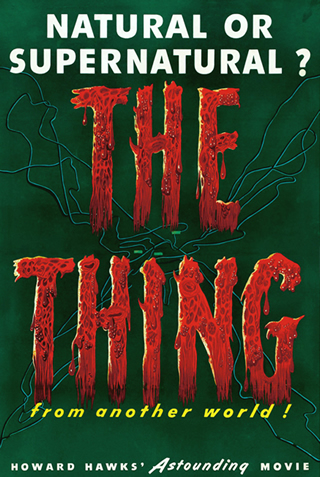It Came from Outer Space - Page 3
 |
|
|
 |
 |
 |
|
|
The Day the Earth Stood Still was directed by Robert Wise, who’d later win Oscars for West Side Story and The Sound of Music. His story proved far more sophisticated and political than most sci-fi films that would follow. Michael Rennie portrayed a humanoid alien, Klaatu, who lands his flying saucer at Washington, D.C. and entreats the far-from-united nations of Earth, as he put it, to “join us and live in peace, or pursue your present course [of international animosity] and face obliteration.”
Unlike most of the science-fiction scripts in the decade to follow, this one (by Edmund H. North, a future Oscar-winner for Patton) featured character interaction more than special effects. Although Klaatu’s giant robot, Gort, neutralizes a few paranoid attacks from the military, the film was more concerned with another of the postwar era’s themes: the dangers of nuclear energy and nuclear weaponry. Also, unlike most other sci-fi at the time, the greater threat comes from man himself and not from an external enemy.
Authors Heinlein and Bradbury grew naturally eager to turn their talents towards film, and to contribute to Saturday Evening Post magazine, which paid better and had many more readers than did pulp magazines. Heinlein co-scripted Destination Moon (1950), one of Bradbury’s Post pieces that inspired the screenplay for The Beast From 20,000 Fathoms (1953), and Bradbury penned a screen treatment for It Came from Outer Space (brought to life in 3-D, also in ’53), in which the aliens, like Klaatu, aren’t malicious.
The elevated level of sci-fi writing “made mainstream readers more comfortable with futuristic fiction,” says Gorsch. Being comfortable with the sci-fi genre, though, didn’t mean that mainstream filmgoers couldn’t be scared sleepless by some of the compelling sci-fi stories brought to the big screen.
“People were not only wanting to be happy and forget the War, they were also very proud of the direction the country was going in, with science creeping in everywhere,” notes Kathryn Marocchino, who has lectured ‘The Literature of the Fantastic’ to classesat the California Maritime Academy in Vallejo.
“But there was also this ominous, dark side to science fiction. American society has a fascination with death because it loves to deny it. It never really leaves the psyche, and to me, this is why there’s an underpinning of an attraction to death.”
Alongside teasers for lighthearted Martin & Lewis comedies and shoot-em-up westerns, the 1953 trailer for The Beast From 20,000 Fathoms linked the threat of death to nuclear weaponry, with a giant image of the A-bomb’s mushroom cloud. And the film’s beast was a marauding dinosaur-like creature brought to life as a byproduct of the bomb, not unlike the giant ants in Them! and the Japanese mutation of the beast as colossal-dinosaur-gone-berserk in 1954’s Godzilla.
Boomer children were drawn in by another recurring theme: the kid discounted or endangered by his elders. This was worked to wondrous effect in Invaders From Mars (1953), directed by William Cameron Menzies, formerly an Oscar-winning art director. Aside from the threatened innocent, Menzies’ movie showcased the mid-century theme of alien control of human consciousness.
Looking out his bedroom window, David MacLean, a young boy, witnesses the landing of one of those flying saucers, and soon finds familiar figures of authority (including his parents and a police chief) behaving coldly and aggressively. David traces the cause to an underground outpost inhabited by Martians, who implant modules at the base of victims’ necks, allowing them to control minds.




